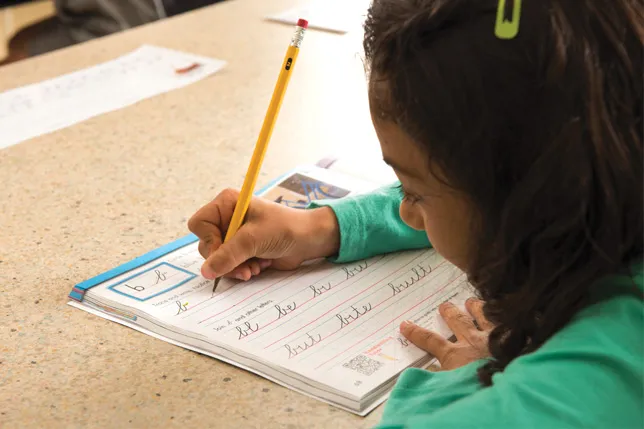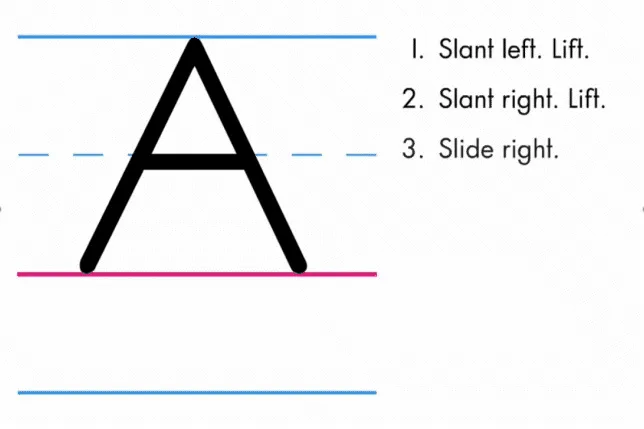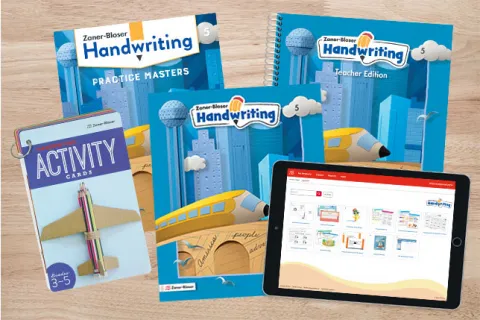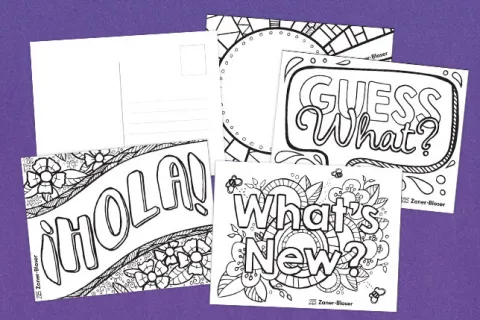
Why Is Handwriting Instruction Valuable?

Handwriting is more than just the act of putting pencil to paper. It’s a powerful tool for building essential literacy skills. Long before students write essays or analyze texts, they must learn how to form and join letters clearly to convey ideas to others. With a small daily investment of time, handwriting instruction pays off across subjects and grade levels.
Handwriting Has Lasting Impact Across Subject Areas
Research shows that handwriting instruction supports reading, spelling, composition—and even math!—in significant and lasting ways. Consider a few of the facts:
- In the earliest grades, handwriting practice improves students’ letter recognition skills, and the ability to identify letters is the most reliable predictor of future reading success.
- Handwriting strengthens fine motor skills, and children with strong fine motor skills do better not only in literacy tasks but also in kindergarten math. Even more impressive, these skills are associated with ongoing reading and math achievement as late as fifth grade.
- For developmentally typical students in grades 4–7, fluent cursive writing consistently predicts higher-level skills in both spelling and composing at each grade.
- Handwriting fluency is strongly related to the quality and quantity of students’ complex written texts as late as grade 8.
- People who take handwritten notes process information better than those who type notes on a laptop. Students who type notes tend to record what they hear verbatim while those who take handwritten notes are more likely to write reflectively as they translate what they are learning into their own words.
Handwriting Activates the Brain for Reading
Modern studies that involve brain imaging tell us that the physical act of handwriting stimulates areas of the brain that engage in other language-related activities. The mental processes involved in handwriting are the same functions required for reading as well as other kinds of learning—storing information in memory, retrieving information, manipulating letters, and linking them to sounds.
Handwriting helps students learn early print concepts, such as recognizing that words are made up of letters, and spaces are used to separate words. When practicing handwriting, young students demonstrate their understanding that text is read from left to right and top to bottom.
Handwriting practice not only improves students’ letter recognition skills but also strengthens students’ phonemic awareness—the ability to hear, identify, and manipulate sounds in spoken words. As students’ ability to create letters and word sounds develops (encoding, also known as spelling), their ability to read them develops too (decoding).
The connections between handwriting, spelling, reading, and writing extend well beyond these early skills to more advanced comprehension and composition skills too. In fact, extensive and still-evolving research indicates that clear and direct teaching of spelling and handwriting is required for all students to learn to read and write well.

Handwriting Makes Composition Easier and Faster
Writing skills are critical for both academic and professional success. Handwriting is a key that unlocks the ability to compose meaningful texts. When handwriting is slow and requires a lot of thought about how to form letters, students aren't able to focus on other kinds of thought processes required to compose complex ideas.
The goal of handwriting instruction is to help children write letters legibly and efficiently, so writing becomes fluid and automatic. But early and systematic handwriting instruction improves more than just legibility. There’s a significant difference in the quantity and quality of texts students produce too. When students can produce words quickly and effortlessly, their minds are free to concentrate on meaning as they compose texts, allowing them to generate, organize, and express ideas more effectively.
Frequently, standardized tests now include a written essay that is scored by trained graders. Students who can write quickly and clearly are able to focus more on their ideas, meaning, and writing techniques. Students who struggle with handwriting not only lack that advantage but also face an extra challenge. . . research shows that messy handwriting can negatively affect how their essays are judged.

Manuscript and Cursive Handwriting Are Equally Important
First, students must learn the manuscript (printed) English alphabet. Learning to draw the straight and curved lines in these letters helps students learn to create all 26 uppercase and lowercase letters, punctuation marks, and numerals. That’s 114 symbols in all that students must learn! These printed letters look like the ones in children’s books, which makes it easier for students to recognize and read them.
Most students progress to cursive handwriting by grade 3. Studies have shown that cursive is important for cognitive development because it requires fluid movement, eye-hand coordination, and fine motor skill development.
Additionally, students who write cursive fluently tend to be better at writing and spelling in grades 4–7. Being able to read cursive also helps us know and understand history by enabling us to read original documents from the past.
Zaner-Bloser Sets the Gold Standard
Our understanding of handwriting’s value and how best to teach it has evolved over time, but Zaner-Bloser has remained a leader in handwriting education since 1888. Generations of students have developed handwriting legibility, fluency, and efficiency with Zaner-Bloser Handwriting—and reaped the benefits that extend to reading, writing, and beyond! Contact us to learn more.
You May Also Like


